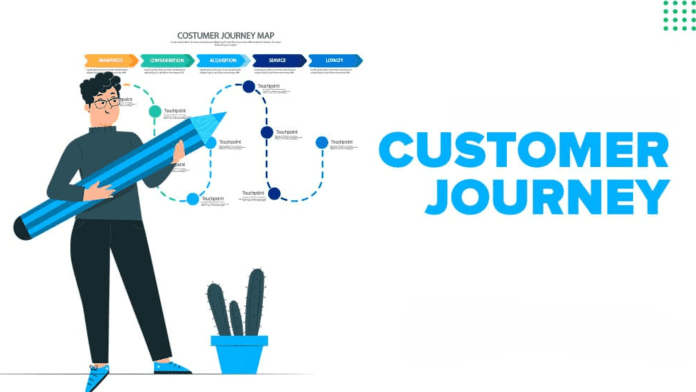Understanding your consumers’ route to conversion is like reading a treasure map to success in the ever-changing world of marketing and business. Businesses can get significant insights into their consumers’ wants, preferences, and pain spots by mapping this journey.
In this post, we’ll look at customer journey mapping and how it may help businesses chart a road to better engagement, conversion, and brand loyalty.
1. Navigating the Customer Journey
Before embarking on the mapping journey, it’s essential to understand what the customer journey entails. It’s the sum of all the touchpoints and interactions a customer has with your brand, from their first encounter to the final conversion (and hopefully, beyond). By visualizing this journey, you can spot opportunities for improvement and optimization.
2. Define Your Customer Personas
Mapping the customer journey begins with a deep dive into understanding your audience. Create detailed customer personas that reflect your target demographics. By knowing who your customers are, what they value, and their pain points, you can tailor your journey map to their specific needs.
3. Identify Key Touchpoints
Next, identify the key touchpoints in your customers’ journey. These are the moments when they engage with your brand, such as visiting your website, interacting on social media, receiving emails, or making a purchase. These touchpoints are like landmarks on the map, guiding your customers along their path.
4. Understand Customer Goals
To create an effective customer journey map, you need to understand your customers’ goals at each touchpoint. Are they looking for information, trying to solve a problem, or ready to make a purchase? By aligning your messaging and content with their objectives, you can guide them through the journey seamlessly.
5. Empathize with Pain Points
Customers often encounter roadblocks or frustrations along their journey. It’s vital to empathize with these pain points. Perhaps your website navigation isn’t intuitive, or your checkout process is cumbersome. By addressing these issues, you can create a smoother journey for your customers.
6. Construct the Journey Map
Now, it’s time to create the visual representation of the customer journey. This map typically takes the form of a flowchart or diagram, illustrating the various touchpoints and the customer’s progression from one to the next. It should encapsulate the entire journey from awareness to conversion and even post-purchase interactions.
7. Implement Cross-Channel Consistency
Consistency is key. Ensure that your messaging and branding remain uniform across all touchpoints. Whether a customer encounters your brand on social media, email, or your website, they should experience a coherent and unified brand identity.
8. Measure and Analyze
Once your map is in place, you can begin measuring and analyzing how customers navigate it. Tools like Google Analytics can provide valuable insights into customer behavior at different touchpoints. This data can help refine the map and make improvements where necessary.
9. Adapt and Optimize
The journey map is not a static document. It should evolve over time as customer preferences and behaviors change. Regularly revisit the map to identify areas for optimization, such as improving user experience, personalizing content, or addressing new pain points that arise.
10. Human-Centric Approach
Remember, the customer journey map is not just about transactions; it’s about creating a human-centric experience. Understanding your customers’ needs and emotions at each stage of the journey is critical to building trust and fostering long-term relationships.
11. Collaboration is Key
Creating an effective journey map often involves collaboration among various departments in your organization. Marketing, sales, customer support, and design teams should all contribute their insights to ensure a comprehensive and accurate map.
Mapping your customer’s journey to conversion is like holding a treasure map to your audience’s hearts and minds. It empowers businesses to create a seamless, personalized, and engaging experience that ultimately leads to higher conversions, customer loyalty, and brand success. By visualizing this voyage, you can navigate the ever-changing waters of the market with greater confidence and sail towards prosperous horizons.





